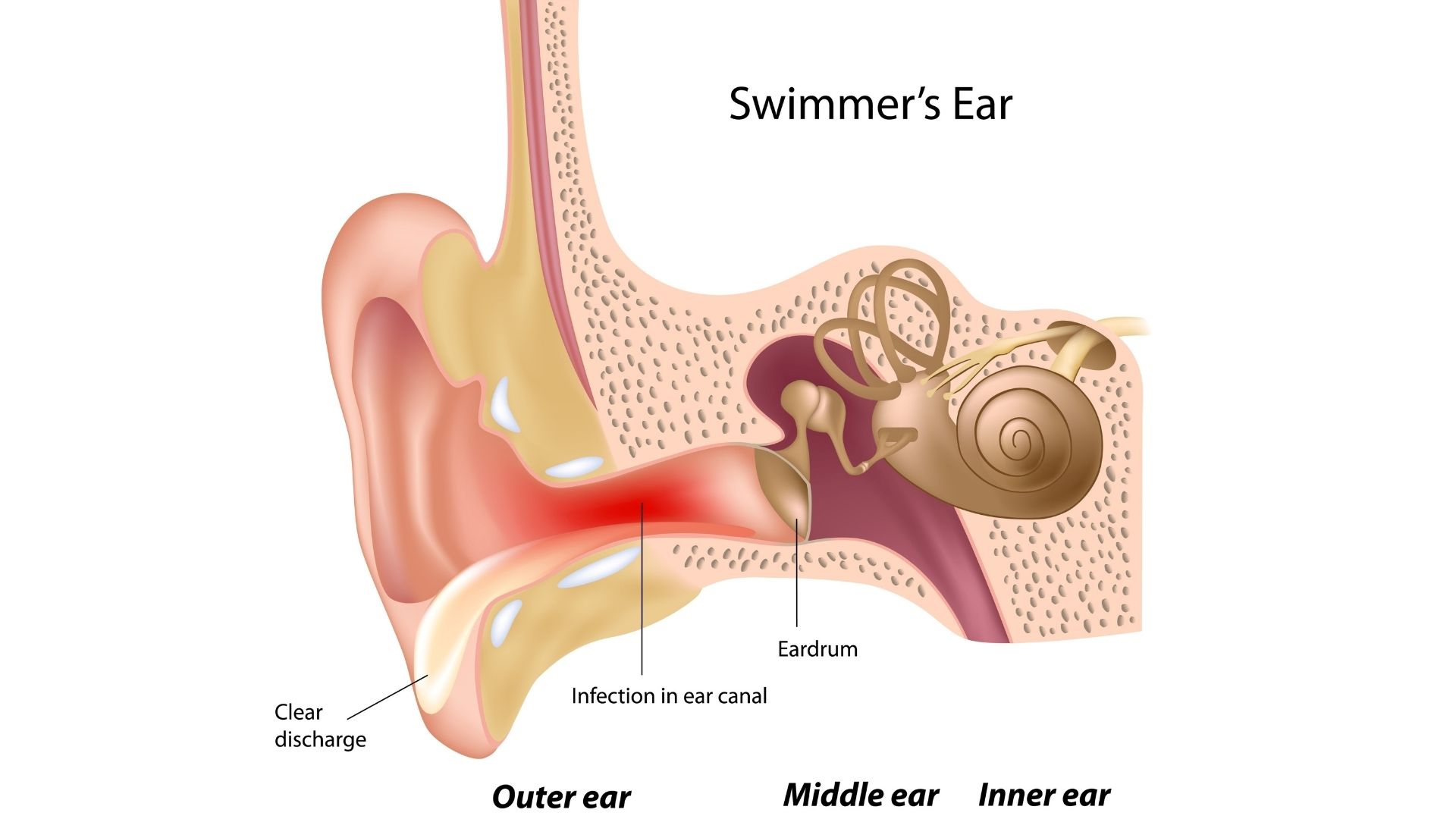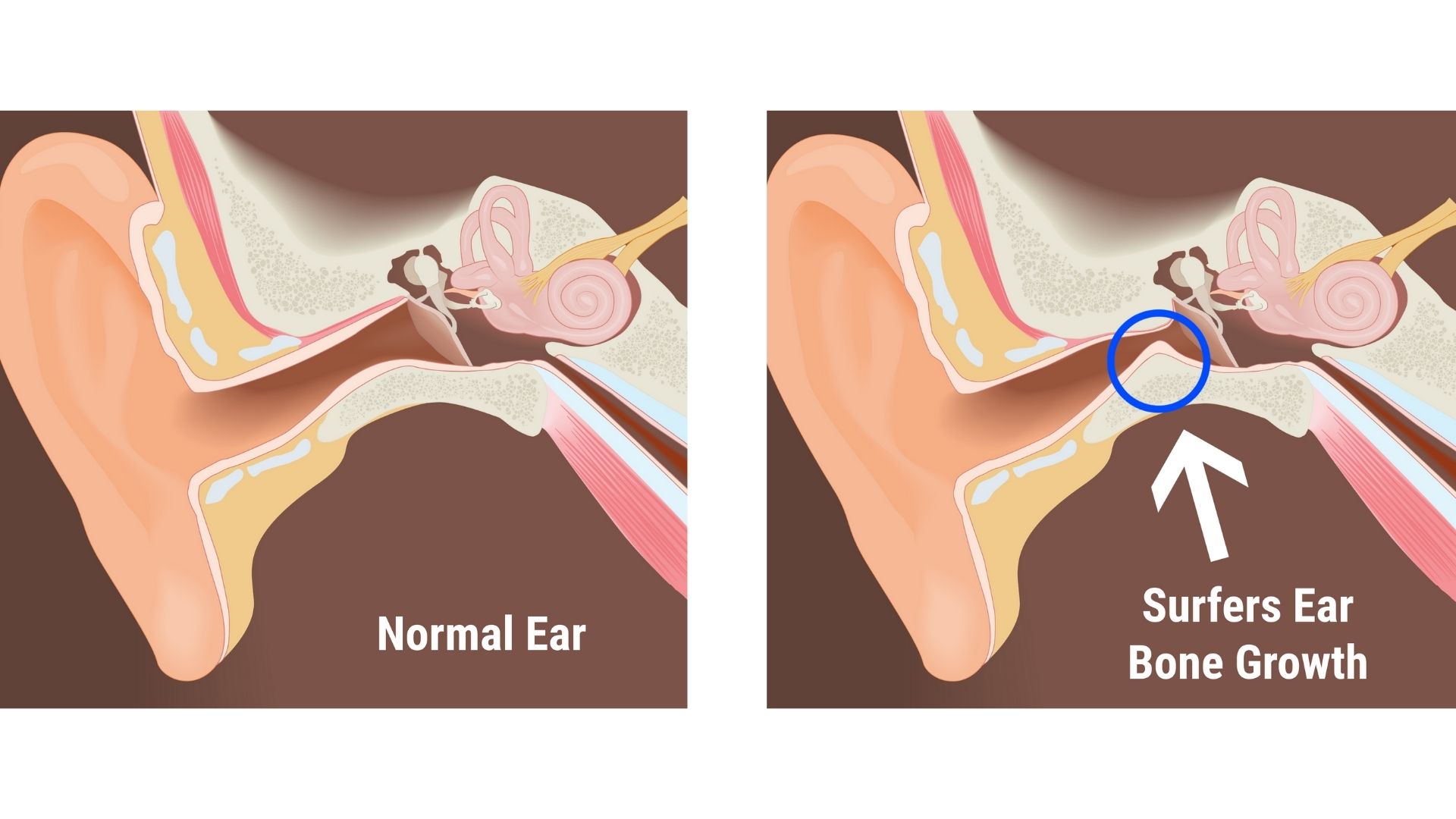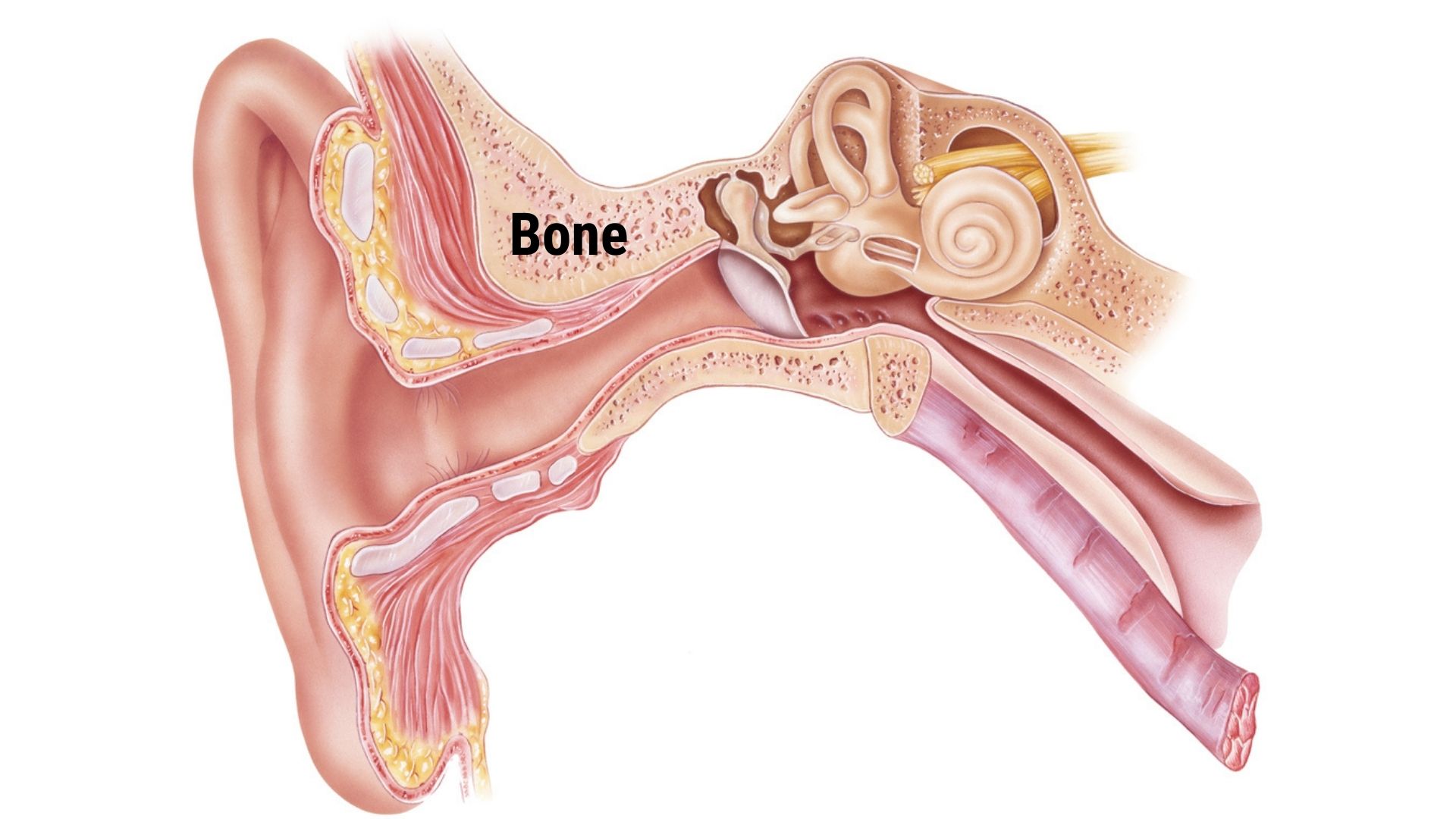A recent study showed that about 80% of Australian Surfers have one thing in common – they suffer from External Auditory Exostosis (EAE) or surfer’s ear.
Some of them experience decreased hearing or partial hearing loss. Others go through an increased prevalence of ear infections, causing ear pain – all of which are the most common symptoms of this ear condition.
But, what is a surfer’s ear?
Does the name suggest it affects only those who are into this popular sport?
If you haven’t heard about it (hopefully not because you have a surfer’s ear) and are a thalassophile, it would be a good idea to read through this guide to arm yourself with awareness as you hit the beach.
What is Surfer’s Ear?
Surfer’s ear is not to be confused with the swimmer’s ear. These conditions are totally different from each other. Surfer’s ear or Exostosis is what comes of abnormal and benign bone growth in the ear canal. Swimmer’s ear or otitis externa, on the other hand, is the inflammation of the ear canal.

But how does surfer’s ear come about?
Our ear canals have about the diameter similar to a #2 pencil. With a surfer’s ear, exostoses or bony outgrowths of the external auditory canal can taper that space severely. These bones are called Osteomas. They can be small, large and may have a wide variety of shapes.

The worst it can get is an immense growth that can close the canal entirely. When this happens, these pearl-like bones can interfere with the natural ventilation and drainage of the external ear. The blockage could result in trapping water or debris in the ear canal.
Why do exostoses or bony outgrowths happen? These bony growths are the ear’s defence mechanism to keep the foul weather out of the ear canals. This occurrence happens because the ears are too smart for their own good.
Prolonged exposure to wet, cold, and breezy conditions causes bony growths to develop, layer by layer until you end up having more bone growths in your ear than the size of your ear canal. The occurrence that is supposed to be a mechanism for protecting the eardrum grows into an ear condition instead.

Surfers are frequently exposed to windy and wet conditions, thus the name surfer’s ear. But, it can also occur to sailors or ocean water swimmers too. The rate of bone progressing depends on exposure. The lower the temperature and the more frequent the exposure, the more steadfast it develops. However, the condition still varies from person to person.
Do you get them from bathing or showering?
No. Luckily, it does not happen when the average patient’s ears are exposed to shower or bathwater.
Symptoms of Exostosis
The symptoms of Exostosis differ per case. Some may experience an ear infection early on, while others fail to recognize they have it all along. Studies show that early stages of exostoses frequently do not result in any symptoms.
However, as the osteomas expand, they stuff the external ear canal and confine water. Trapped water leads to external otitis or ear infection. When this happens, it alters the shape of the ear canal. The result could range from conductive hearing loss to ear pains.
Generally, one ear will be, to some extent, worse than the other because of the prevailing wind direction of the location surfed. It may also be the side that strikes the wave first every so often. The decrease in hearing or hearing loss may be temporary or ongoing.
Other symptoms listed are increased prevalence of ear infections, ear pains, trouble in removing debris or water from the ear, or plugging sensation.
How Is Surfer’s Ear Affecting the Surfing Community?
The fact that the condition is called surfer’s ear says a lot about how it significantly affects people who are into surfing. Exostosis’ prevalence among surfers is at 60 to 80% as of 2017.
Modern wetsuits are now highly improved and enhanced; therefore, it made individuals more comfortable spending more time in colder environments. With this technology is the side effect that developed in the surfer’s ear.
Surfears recently studied surfers from a surfing event. Out of the 107 surfers – both professional surfers and surf enthusiasts, 75% or 80 surfers had a relative degree of surfer’s ear in at least a year. 84% or 90 surfers had surfed for more or less ten years. 50% of 54 of them have the worst case in which two-thirds of their ear or their ear canal is closed.
Diagnosing and Treating Surfer’s Ear
Surfing has gone more popular over the years. Considering the advancement in wetsuit technology, many surfers are now spending more time even in icy conditions. Having said that, Exostosis also became increasingly common.
The excellent news is surfer’s ear is 100% treatable. For ears that are suffering the worst symptom, the treatment is surgery. The increasing number of patients suffering from this ear condition made way to discovering advancements in treatment, including less invasive exostosis surgery.
Nevertheless, the severity of the surfer’s ear, and depending on what the doctor will advise, there are three types of surgery:
- Incision behind the ear – The oldest procedure in the book to treat the surfer’s ear. This method has become less popular with the advancement of medical tools. In this technique, the doctors incise an opening behind the ear, peel the skin forward, and take a drill to chisel through the exposed ear canal.
- Drill or chisel in the ear canal – Otologists’ most popular method as it can be performed under local anesthesia versus general. Most specialists prefer chisel over drill because of the equipment’s loudness that may also cause ear damage.
- Laser – The latest development in ear conditions treatment. Several ear specialists are now making use of laser surgery to remove bone growth. It is less common than the first two techniques.
Patients who receive laser treatment are reported to have shorter recovery time, whereas patients who went under the knife go on about three weeks of a recovery period.
Preventing Surfer’s Ear
We may be among the many people who said it but, prevention is better than cure. In a surfer’s world, it would be logical to say, “block it before it blocks up.” Common ear-canal water clogging, muffled hearing, or frequent infections should remind you to visit the doctor.
If your situation doesn’t require surgery yet, then you’re in luck. However, it doesn’t mean that you are invulnerable to this condition. It only means that you should start surfing with extra consideration to your ears.
Since cold water and cold environments are the main factors that cause surfer’s ear, then it is rational to keep yourself from doing water activities during extremely cold or windy conditions. But, if you really feel the need to ride then, arm yourself with preventive items to keep surfer’s ear away:
- Surf Earplugs – Look for the ones that work for you. Some earplugs let sound in but keep water out. Pick the ones that are specifically moulded to your ear. A putty from the drugstore can work, too.
- Ear drops – Use eardrops after every rider. These liquid medications help dry the water caught in the ear canal. However, be sure that the ear drops you pick aren’t high in alcohol. High alcohol content will make the skin too dry and may cause infections.
- Blow dryer – A blow dryer can do magic too. After surfing, put the hairdryer in its lowest setting. Move it back and forth over your ear to help dry up the water. This method has become popular that surf shops now sell portable dryers specifically designed for ears.
- Hoods – Hoods don’t only protect you from brain freeze but years of ear discomfort, as well.
Conclusion
Preventive measures are your best armour against the surfer’s ear. Surfer’s ear is a surfing accessory that no surfer wants. It is a risk that you have to brave through when you surf, along with the great white sharks and jagged reefs.
But, as long as you understand this risk and you learn the early signs, you can stop the surfer’s ear before your ability to hear suffers.
FAQs (Frequently Asked Questions)
Q: How do surf earplugs work?
A: Earplugs are tiny devices inserted in the ear canal to keep the users from loud noises, water and dust intrusion, or excessive winds. They can be foam, wax, flanged silicone, or custom moulded. They work by covering the ear canal so that foreign bits and pieces are blocked and unable to travel down the canal to the eardrum. They are inserted into the ear in a tight compression against your ear canal. With their elasticity, they expand through your ear canal and block what needs to be impeded.


